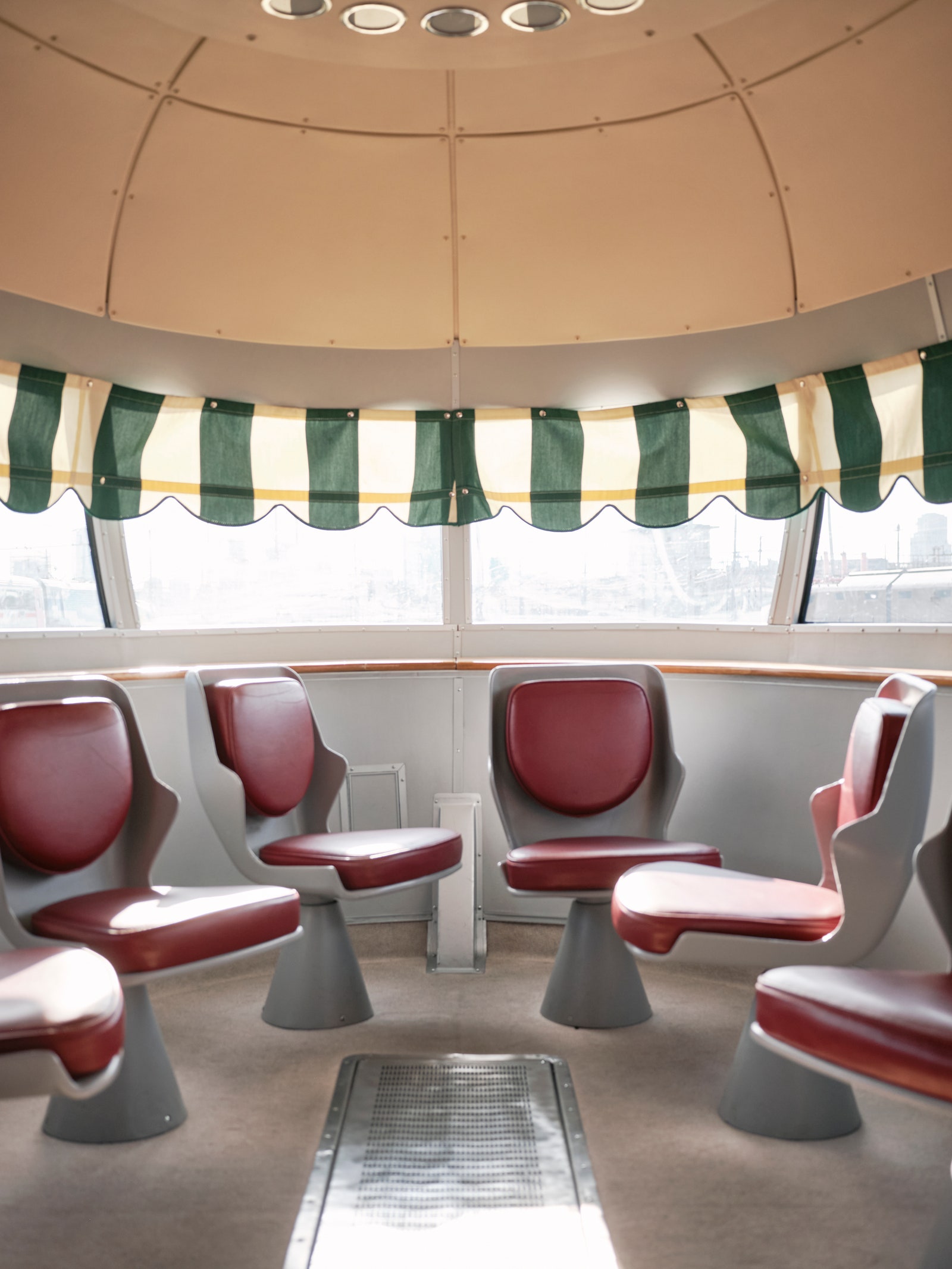All aboard the Prada express! The fourth edition of Prada Frames, the annual symposium of cross-disciplinary talks running in tandem with Milan’s Salone del Mobile, pulled into the city’s Centrale train station last week—and delved into some of today’s most urgent issues through the lens of design and culture.
Each year, the Prada Frames program is curated by design and research studio FormaFantasma, founded in 2009 by Andrea Trimarchi and Simone Farresin. Their work spans both natural and built environments, and is committed to the discovery of new material and social possibilities. Forgoing the week’s more literal showings of design and homeware, Farresin and Trimarchi’s curatorial approach at Prada Frames has evolved over the past four years: On Forest was their first edition in 2022, an inquiry into the ecological, cultural, and philosophical significance of forests. Next came 2023’s Materials in Flux and last year’s Being Home, where the programs explored more complex dynamics of materiality, domesticity, and socio-economic systems. All were intimate affairs.
This year’s theme, In Transit, offered a focused exploration of the infrastructures that underpin the systems that surround our daily lives, both visible and invisible. “We are interested in exploring not just how objects are designed, but how the systems that support and move them function,” says Trimarchi.
The choice of location speaks directly to the theme every year. Previous locations include a 19th-century neo-Renaissance house museum and the Teatro Filodrammatici, one of the oldest theaters in Milan. For 2025, parts of the symposium took place in the Gio Ponti and Giulio Minoletti-designed Arlecchino train, an elegant symbol of post-war Italian design and La Dolce Vita lifestyle, while other talks were held within the station’s Royal Pavilion—once the waiting room for royal family members and heads of state. “These are not just venues—they are part of the narrative,” says Trimarchi. “They reflect our interest in mobility and infrastructure, not just as abstract ideas, but as spatial, historical, and material realities. We want people to feel immersed in the very systems we are discussing.”
Trimarchi explains that, since Being Home, they haven’t provided visual aids for the symposiums—everything is focused on the speaker in the space. “This choice encourages intimacy and focuses purely on the exchange of ideas—something that stands in contrast to the highly visual, image-driven nature of most events during Salone,” he says.
















